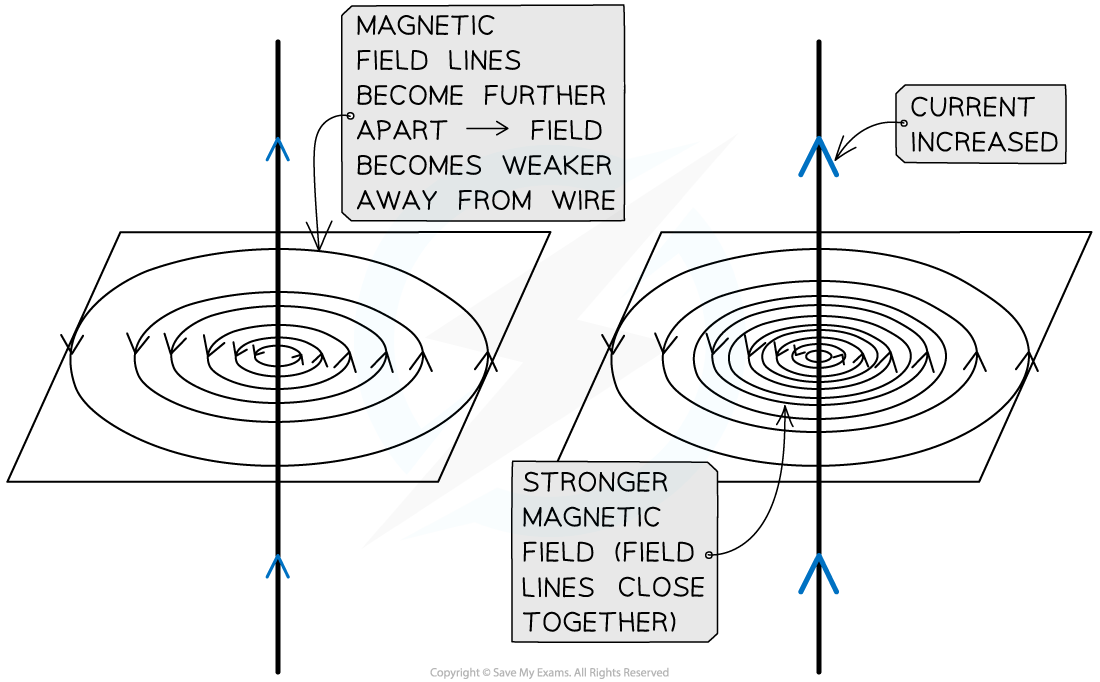Electromagnetism
- When a current flows through a conducting wire a magnetic field is produced around the wire
- The shape and direction of the magnetic field can be investigated using plotting compasses

Diagram showing the magnetic field around a current-carrying wire
- The magnetic field is made up of concentric circles
- A circular field pattern indicates that the magnetic field around a current-carrying wire has no poles
- As the distance from the wire increases the circles get further apart
- This shows that the magnetic field is strongest closest to the wire and gets weaker as the distance from the wire increases
- The right-hand thumb rule can be used to work out the direction of the magnetic field

The right-hand thumb rule shows the direction of current flow through a wire and the direction of the magnetic field around the wire
- Reversing the direction in which the current flows through the wire will reverse the direction of the magnetic field

Side and top view of the current flowing through a wire and the magnetic field produced
- If there is no current flowing through the conductor there will be no magnetic field
- Increasing the amount of current flowing through the wire will increase the strength of the magnetic field
- This means the field lines will become closer together
Factors Affecting Field Strength
- The strength of the magnetic fields field depends on:
- The size of the current
- The distance from the long straight conductor (such as a wire)
- A larger current will produce a larger magnetic field and vice versa
- The greater the distance from the conductor, the weaker the magnetic field and vice versa

The greater the current, the stronger the magnetic field. This is shown by more concentrated field lines










